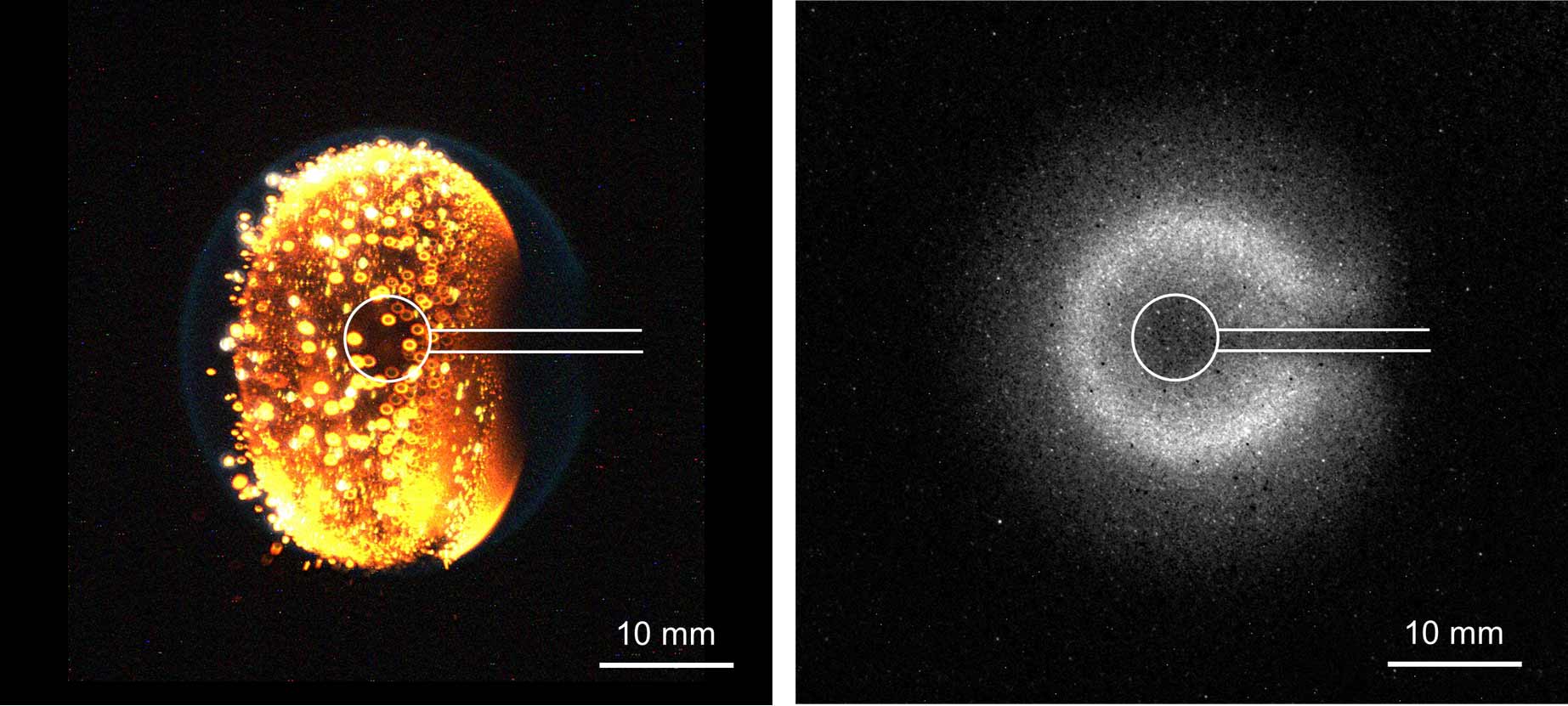- July 15, 2021
- By Melissa Andreychek
An entirely new class of fire known as spherical cool diffusion flames—or simply “cool flames”—has been documented aboard the International Space Station in a project led by a University of Maryland researcher.
These dim, quiet flames could ignite development of the engines of the future, said fire protection engineering Professor Peter Sunderland.
“This discovery transforms our understanding of what fire can be and what it can do,” he said. “If we can understand and model how they work, then we might be able to harness cool flames to design a new class of clean combustion engine.”
Although “cool” is relative, the flames are aptly named: They burn with a near-invisible glow at around 900 degrees Fahrenheit, while a natural gas burner at high heat on a conventional stove top can reach 3100 degrees Fahrenheit. They are also somewhat mysterious; as recently as 10 years ago, cool flames had only been theoretically predicted. First observed during an experiment aboard the International Space Station (ISS) in 2012, the cool flames appeared only briefly before the liquid fuel was depleted. The sighting catalyzed an emerging, rapidly growing field in combustion research.
“Little is known about combustion chemistry at these temperatures,” Sunderland said. “Part of what we’re learning is how much we didn’t know.”
To advance fundamental understanding of the nature of cool diffusion flames, Sunderland and his collaborators, including Richard Axelbaum at Washington University in St. Louis and Forman Williams at the University of California, San Diego, launched an experiment to the ISS in late 2020 designed to generate controlled cool flames that burn steadily for at least two minutes.
In a first for microgravity flame research, they achieved this feat—with the help of astronauts aboard the ISS testing a variety of gas fuels—on June 23. UMD graduate student Minhyeng Kim observed something unusual in experiment data: After the hot flames extinguished and disappeared from camera view, heat was still being produced. The cool flames were so dim that sensitive cameras initially revealed nothing. UMD graduate student Kendyl Waddell then enhanced camera footage to reveal the astounding behavior that, after the hot flame extinguished and all reactions ceased, residual heat reignited the flowing fuel as a steady spherical cool diffusion flame.
It’s the first time spherical cool diffusion flames have been observed burning gaseous fuels.
“This is a significant advance in the understanding of cool flames, and we are excited to see these experimental results,” said scientist Daniel Dietrich of NASA’s Glenn Research Center. “The discovery of steady non-premixed cool flames will allow a more detailed study of cool flames and their chemistry.”
An immediately obvious application of cool flames would be in a new type of highly efficient internal combustion engine, said Sunderland and Axelbaum. If cool flame chemistry were better understood, it could be used as a kind of catalyst to control the timing of higher-temperature combustion.
Topics
Research